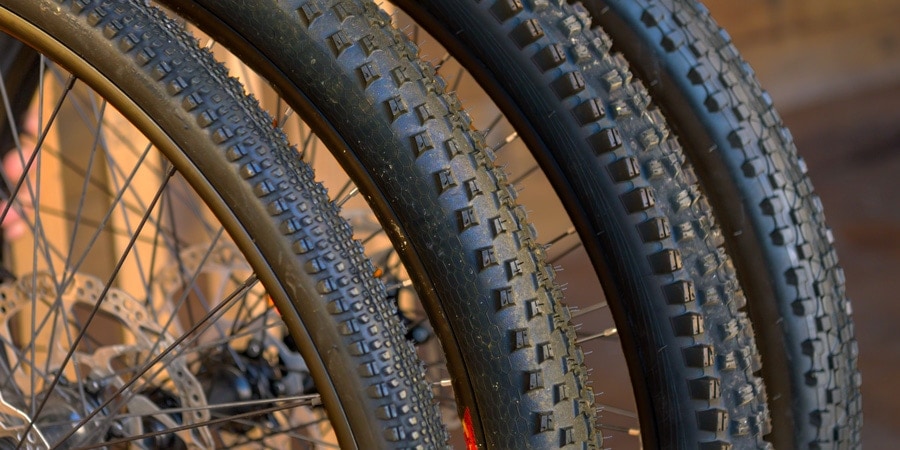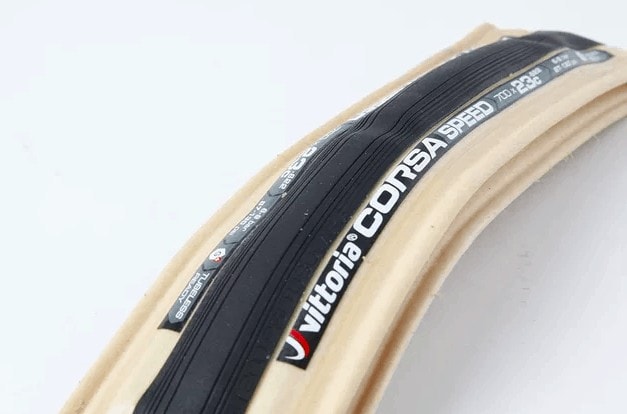Want to know more about road bike tires before buying one?
You probably curious about things such as,
- Which type of tires should you get?
- Clincher, tubeless, or maybe tubular?
- What size should I get?
- How long will they last?
There are many tires out there to choose from, various sizes, thread patterns, and a wide range of pricing points.
On this page, I’ll discuss all these in detail so that you’ll be more informed when it comes the time to get a pair of tire yourself.
On This Page
Type of Road Bike Tires
Today, there are three basic types of road bike tires :
- Tubular
- Tubeless
- Clincher
Let’s take a deeper look into each one of them and their pros and cons.
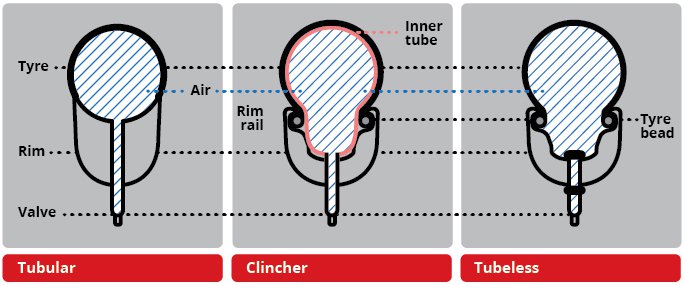
Tubular Tires
Tubular tires or sometimes referred to as tubs are the most popular tires for racing. The main reason for this is because tubular tires have very minimal rolling resistance and hence faster.
In a tubular tire, the inner tube is sewn into the tire, and they don’t use beads to connect to the bike frame.
Instead, tubular tires are glued onto the rims, which can be time-consuming to replace. This can also make changing tubular tires a real challenge if you happen to get a flat mid-ride, unless you have a mechanic with a ready spare wheel following you, just like the pros.
The good news is, you can temporarily ride a tubular tire even with a puncture. But you’ll need to get them fixed as soon as possible.
- Pros. Minimal rolling resistance and hence, more speed
- Cons. Hard to replace mid-ride if you get a flat
Tubeless Tires
Tubeless tires have been a popular choice for mountain bikes since the ’90s. Around 5 to 6 years ago, the bicycle industry tried to introduce tubeless tires for road bikes.
But unfortunately, that didn’t materialize mainly due to the limited choices of tubeless tires and tubeless compatible wheelsets back then.
But today, tubeless tires are making a comeback especially with top of the line, racing tires such as the Continental GP5000 TL and Vittoria Corsa TLR. You’ll often see two variants of the same tire.
Tubeless tires, as the name indicates, don’t have an inner tube. Instead, they create a seal directly with the rim, which is why you need a compatible wheelset.
To achieve proper sealing, you need a tubeless compatible rim, a special valve, and tire sealant. Tubeless tires aren’t as vulnerable to flats as clinchers. With tubeless, you have the advantage of inserting a spare tube should the sealant fail to seal the flat.
- Pros. Low rolling resistance due to the absence of inner tubes.
- Cons. Tire choices are still limited, but growing fast in the past 1-2 years.
Clincher Tires
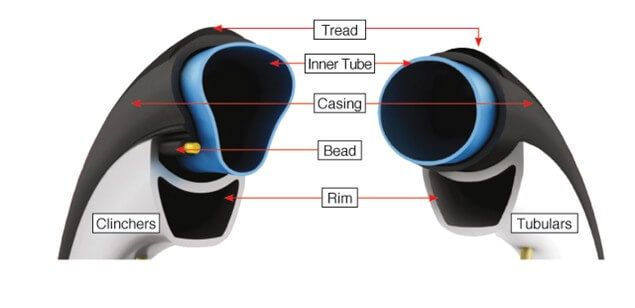
Clincher tires are the most common type of road bike tires. All the tires recommended above are clinchers.
They need to work with an inner tube and the tires hook onto the rim using beads.
Clinchers are quick and easy to fix if you happen to get a flat. For most cyclists, it takes less than 10 minutes to get everything sorted by the roadside, especially if you’re using a Co2 inflator instead of a hand pump.
However, clincher tires are a bit more vulnerable to pinch flats especially if you’re running on lower tire pressure.
Clinchers come in two variants;
- Folding
- Non-folding
Folding clinchers such as the Pirelli P Zero and Schwalbe Pro One tend to be lighter and are easier to transport and change. Non-folding clinchers such as the WTB Thickslick are heavier and a bit more awkward.
- Pros. Cheaper, plenty of tire choices, and easy to fix a flat
- Cons. Vulnerable to pinch flats
Tire Width
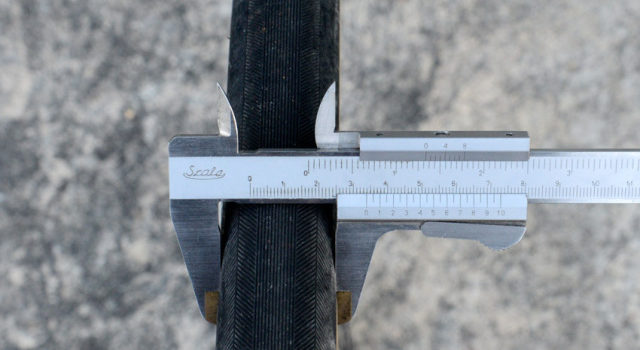
Road tires typically come in 23mm, 25mm, and 28mm widths.
Sometimes, they’re referred to as 23c, 25c, and 28c. So don’t be alarmed.
Even though a few millimeters might seem like a small difference, it can actually make a big difference in how your tire handles.
Today, 25mm is many cyclists’ favorite.
You can also use lower air pressure with wider tires, which provides additional comfort. Wider tires also handle winter road conditions better. It also makes handling corners easier and helps manage uneven road surfaces, making for a more comfortable ride.
Geek Tip : Always check if your bike frame have enough clearance to take wider tires (25c and above) and wheelsets, especially if they’re pre-2016 models.
Tire Threads and Grip Levels
Road tires may or may not come with threads.
Treads are the textured parts of a tire that influence how your tires grip the road.
Road tires typically don’t have the knobby texture that you find on mountain bike tires. Instead, the tread is more of a pattern in the tire.
Many road bike tires are combination tires, which means they have tread in some sections and are smooth in others.
Other tires have no tread, which some riders feel give them a better grip on the road, since the tires without tread may conform more to the road as you ride.
Puncture Protection Properties
Tires come with different levels of puncture protection.
This is usually achieved by adding an extra layer of material to the tire to help prevent punctures. This may be an extra layer of rubber or a specialized fabric. Some would call it a puncture protection belt.
You’ll also notice the common usage of the term TPI or Threads per Inch.
TPI refers to the grade of the fabrics used to manufacture the tire’s casing.
A higher TPI refers to finer threads, denser weave, and most importantly, a suppler tire, which ultimately means lower rolling resistance.
Geek Tip : The higher the TPI number, the lower the rolling resistance, hence the faster the tire.

